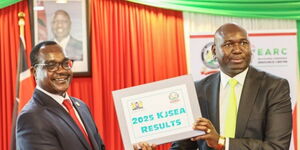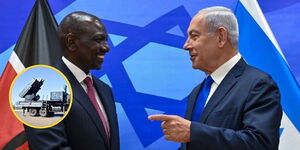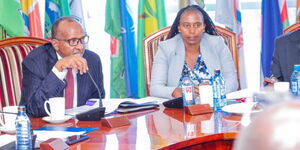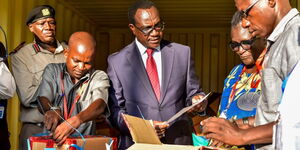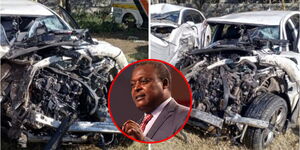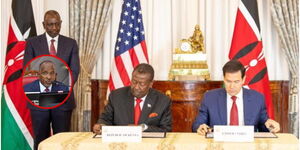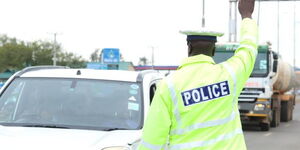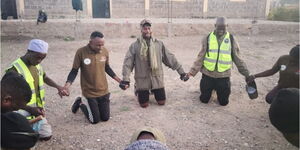The proposal to form the elite Recce Company within the GSU was submitted in 1964 to Kenya's first President Mzee Jomo Kenyatta by former Minister Bruce McKenzie.
The minister who was a member of 3 spy agencies (Israel's Mossad, Britain's MI6 and South Africa's BOSS) first suggested the establishment of the unit to protect the president.
The then Commissioner of Police Sir Richard Catling dismissed the proposal arguing that satisfactory measures were already in place.
At that time the president's security included two armed “henchmen” who would accompany him everywhere, an assistant superintendent of police, a chase car with armed officers, police officers in his Nairobi home, armed “private armed men” living in his compound, and a telephone in his home linked to the police network to report any emergency.
McKenzie later learned and told British authorities that Vice President Jaramogi Oginga Odinga had sent 86 men to Bulgaria for military training to become his praetorian guards on their return.
He was also alarmed by the attention Jaramogi had received while visiting Russia, which MI5, the British intelligence, claimed was only comparable to the reception the communist state gave Egypt’s second President Gamal Abdel Nasser.
McKenzie started plotting how to revive the conversation on forming Recce. Britain was skeptical of a possible coup but did not want to take chances nonetheless.
They agreed that they would only provide training if the request came from Kenyatta himself.
“I think on balance we shall have to agree to provide this training. I suggest, however, that we insist that the final request comes from Kenyatta himself and would prefer that we require the Kenyans to pay,” Nation quoted a declassified British intelligence document.
The two nations reached a conclusion based on the assumptions that; There was an urgent need to prepare for an attempted coup instigated by Jaramogi and that the proposed special unit would support a pro-Britain regime against an pro-Soviet Union one in Kenya as part of the Cold War.
“Howeve much or little there may be in the recent reports of Odinga’s private army and however effective or otherwise it may be, the threat or rumour of it is in itself likely to intimidate political neutrals and speed the growth of Odinga’s influence and there is a strong case for trying to neutralise it,” the secret document continued.
On May 14, 1964, General Freeland, the Vice Adjutant at the British Ministry of Defence, Kenya’s Commissioner of Police and Mckenzie formally agreed that a unit of around 60 loyal men from Kenyatta's community should be formed and placed under the police and not the army.
In a report sent to Kenya's Defence Minister Njoroge Mungai, the three also suggested that the unit should be trained by the British Special Air Services (SAS) and all recruits should be drawn from the GSU.
On February 21, 1965, four British SAS instructors arrived to set up a special force to act as the President’s bodyguards. Shortly after, two platoons of 37 men from the GSU, all of them carefully vetted, were recruited.
The following year, Britain proposed to Mzee Kenyatta that another 15 to 20 men from different Kenyan tribes be allowed to serve in the unit. These men were hand-picked by Ministers loyal to the President and carefully vetted.
Since then, the GSU special unit has expanded gradually into a more diverse and formidable commando team.

